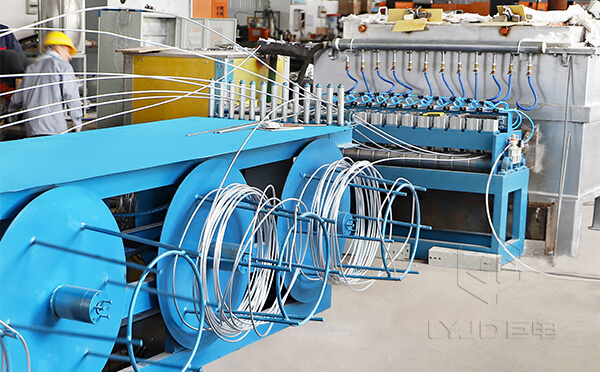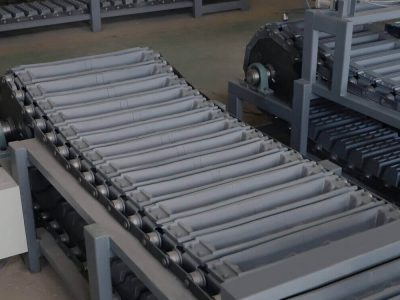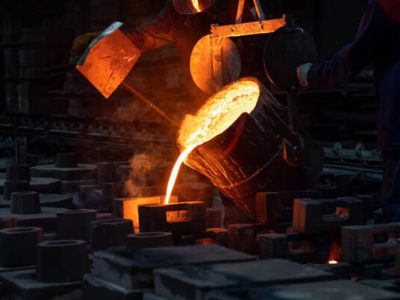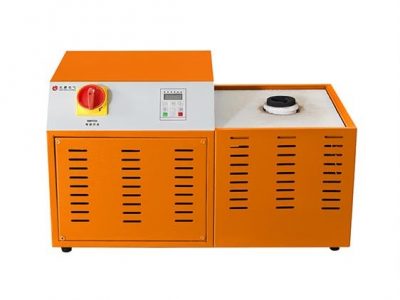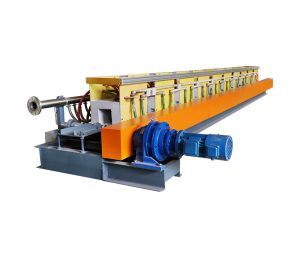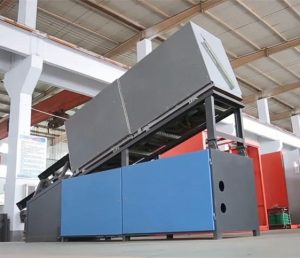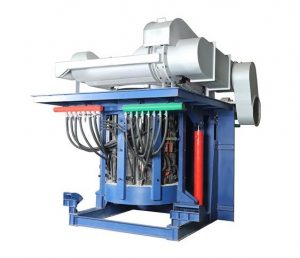Horizontal continuous casting is a method used to produce long lengths of metal rods, including aluminum rods. In this process, molten aluminum is continuously poured into a horizontal casting mold, where it solidifies and is continuously withdrawn to form a continuous rod.
Aluminum Rod Horizontal Continuous Casting Steps
Here are the basic steps involved in the aluminum rod horizontal continuous casting.
Furnace and Melting
The process begins with a furnace that melts the aluminum raw material, typically aluminum ingots or scrap. The furnace is designed to reach and maintain the desired temperature for melting the aluminum.
Launder System
Once the aluminum is molten, it is transferred to a launder system, which acts as a channel to transport the molten metal to the casting mold. The launder system typically consists of a refractory-lined trough or launder that directs the molten aluminum to the casting machine.
Casting Machine
The casting machine is the central component of the continuous casting process. It consists of a water-cooled casting mold, usually made of steel, in the shape of a hollow tube. The mold is equipped with a series of water-cooling channels to facilitate rapid solidification of the aluminum.
Continuous Casting
The molten aluminum is poured into the casting machine, and it flows through the mold. The water-cooling channels in the mold extract heat from the aluminum, causing it to solidify gradually. As the solidification progresses, a solid shell of aluminum forms on the inner surface of the mold.
Withdrawing the Rod
As the aluminum solidifies, a withdrawal mechanism is used to continuously draw the solidified rod out of the mold. The withdrawal speed is carefully controlled to ensure proper solidification and maintain the desired dimensions of the rod. It is essential to control the temperature and cooling rate to achieve the desired metallurgical properties of the aluminum rod.
Cutting and Coiling
Once the continuous rod is withdrawn from the mold, it may pass through a series of rollers or cutting devices to achieve the desired length and shape. The rod can be cut into individual lengths or coiled onto spools for further processing or distribution.
Product Defects during Aluminum Rod Horizontal Continuous Casting
During the horizontal continuous casting process for aluminum rods, several defects can occur. Here are some common defects.
Centerline Segregation
Centerline segregation happens when there is a variation in the composition of the aluminum along the centerline of the rod. It occurs due to differences in solidification rates and can result in uneven distribution of alloying elements, leading to reduced mechanical properties in the affected region.
Hot Tears
Hot tears are cracks that occur in the casting due to thermal stresses during solidification. They typically appear perpendicular to the direction of withdrawal and can occur near the meniscus or the mold region. Hot tears can weaken the structural integrity of the rod.
Surface Cracking
Surface cracking refers to cracks that form on the external surface of the cast rod. It can result from excessive cooling rates, inadequate mold lubrication, or high surface tension of the molten aluminum. Surface cracks can lead to surface defects and reduce the overall quality of the rod.
Shrinkage Porosity
Shrinkage porosity appears as voids or cavities within the cast rod and is caused by inadequate feeding of the solidifying aluminum. It occurs when the solidification front advances faster than the liquid feed can compensate, resulting in localized shrinkage and porosity.
Inclusions
Inclusions are foreign particles or impurities trapped within the aluminum during the casting process. They can originate from the raw materials or be introduced during the casting process. Inclusions can negatively affect the mechanical properties of the rod and reduce its quality.
Central Pipe
Central pipe is a defect that appears as a hollow core running along the centerline of the cast rod. It occurs due to insufficient feeding of molten aluminum to the solidification front, resulting in a central void. The central pipe can weaken the rod and affect its dimensional stability.
Misrun
A misrun occurs when the solidification of the aluminum is incomplete, leading to an improperly formed section of the rod. It can result from inadequate pouring temperature, poor mold design, or improper cooling conditions.
Desired Metallurgical Properties of Aluminum Rods
The desired metallurgical properties of aluminum rods produced through horizontal continuous casting depend on the intended application and the specific alloy being cast. However, there are some general metallurgical properties that are typically sought after:
Homogeneity
Homogeneity refers to the uniformity of the microstructure and composition throughout the aluminum rod. It is crucial to ensure consistent mechanical and physical properties along the entire length of the rod. By controlling the cooling rate and solidification process, horizontal continuous casting aims to achieve a homogeneous microstructure with minimal variation in composition.
Grain Structure
The grain structure of the aluminum rod is an important consideration. Fine and equiaxed grain structures are often desired as they can contribute to improved mechanical properties, such as higher strength and better formability. The cooling rate and withdrawal speed during continuous casting influence the grain structure, and optimization is done to achieve the desired properties.
Mechanical Properties
The mechanical properties of the aluminum rod, such as tensile strength, yield strength, ductility, and toughness, are crucial for its performance in various applications. The casting process aims to produce rods with consistent and predictable mechanical properties, which can be influenced by alloy composition, cooling rates, and heat treatment processes.
Surface Quality
The surface quality of the aluminum rod is important for its subsequent processing and usage. A smooth and defect-free surface is desirable to minimize the risk of surface defects during subsequent machining or forming operations. Proper mold design, lubrication, and control of process parameters help in achieving a high-quality surface finish.
Chemical Composition
The chemical composition of the aluminum rod, including the presence of alloying elements, is carefully controlled to meet specific requirements. The desired composition depends on the intended application and the desired properties, such as corrosion resistance, electrical conductivity, thermal conductivity, or specific mechanical characteristics.
Cleanliness
The cleanliness of the aluminum rod refers to the absence of impurities, inclusions, and surface defects. Minimizing the presence of foreign particles and ensuring proper filtration and degassing during the melting and casting process is essential to produce clean rods with improved quality.
Overall
Horizontal continuous casting offers several advantages, such as the ability to produce long lengths of aluminum rods with fewer defects compared to other casting methods. It also allows for higher production rates and improved efficiency.
It's important to note that specific equipment and process parameters may vary depending on the manufacturer and the desired specifications of the aluminum rod.
























